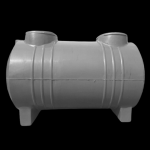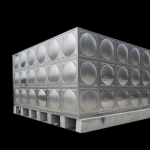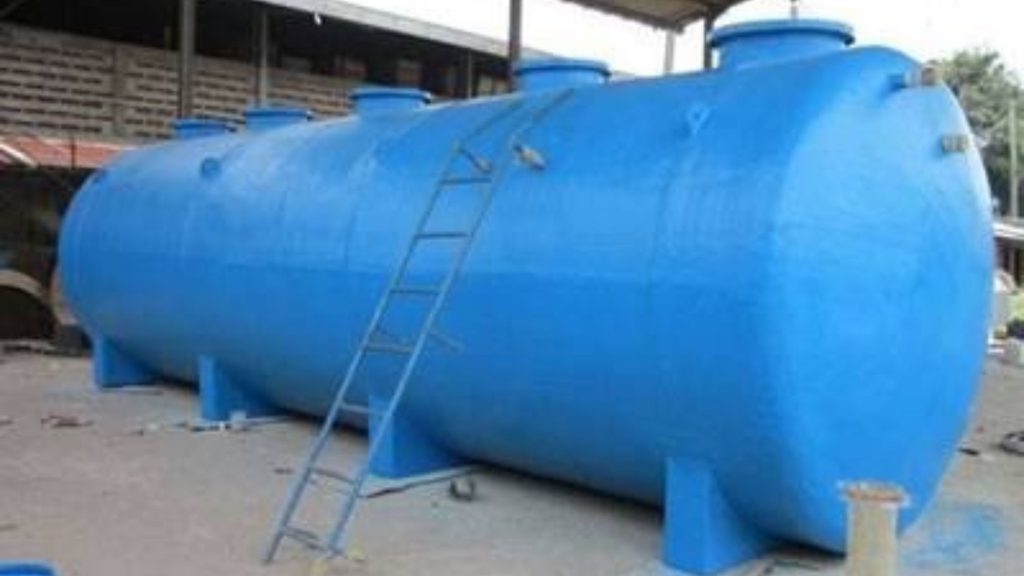Why Choose FRP Composite Tanks Over Stainless Steel for Storing Sulfuric Acid (H₂SO₄)?
Sulfuric acid (H₂SO₄) is one of the most highly corrosive and hazardous industrial chemicals, commonly used in various sectors. Selecting the right chemical storage tank is essential for ensuring safety, durability, and operational efficiency. This article explains why FRP (Fiberglass Reinforced Plastic) tanks outperform stainless steel in storing H₂SO₄ and helps you make the best investment for your chemical system.
1. Overview of H₂SO₄ and Storage Requirements
1.1 What is Sulfuric Acid (H₂SO₄)?
Sulfuric acid is a strong inorganic acid, colorless, viscous, highly soluble in water, and releases intense heat during dilution. Key characteristics include:
-
Dissolves most metals
-
Strongly corrodes materials like steel, stainless steel, and concrete
-
Easily evaporates at high temperatures
-
Reacts violently with water and alkalis
1.2 Industrial Applications of H₂SO₄
-
Fertilizer manufacturing (superphosphate production)
-
Metal processing and metallurgy
-
Wastewater treatment
-
Pulp & paper, textile, and chemical industries
1.3 Strict Requirements for Storing H₂SO₄
-
Tank material must be highly corrosion-resistant
-
Design must be airtight and secure to prevent vapor release
-
Temperature must be stabilized to avoid sudden expansion or reactions
2. Why Stainless Steel Is Not the Ideal Choice for H₂SO₄ Storage
2.1 Limitations of Stainless Steel
Although stainless steel (304/316L) is durable and rust-resistant in general environments, under high-concentration sulfuric acid:
-
It deteriorates rapidly due to aggressive corrosion
-
Poses leakage risks, endangering workers and operations
-
Requires special linings or coatings → increased costs
2.2 High Cost of Stainless Steel H₂SO₄ Tanks
-
Requires special alloys (Alloy 20, Hastelloy) costing 3–5× more
-
Complex fabrication, high maintenance and repair costs
-
Not suitable for small to medium-sized businesses
3. The Alternative: FRP Composite Chemical Tanks

3.1 What is FRP?
FRP (Fiberglass Reinforced Plastic) is a composite material made from:
-
Base resin (Vinyl Ester, Epoxy, or Polyester)
-
Reinforced fiberglass layers
Advantages:
-
Excellent corrosion resistance to acids, alkalis, salts, and solvents
-
Lightweight and easy to transport and install
-
Fully customizable for size and shape
-
Long service life: 15–20 years with proper maintenance
3.2 Structure of FRP H₂SO₄ Storage Tanks
| Component | Function |
| Inner lining | Direct contact layer – resists acid corrosion |
| FRP reinforcement | Provides mechanical strength and durability |
| External coating | Protects against UV, weather, and abrasion |
4. Comparison: FRP vs. Stainless Steel for H₂SO₄ Storage
| Criteria | FRP Composite Tank | 316L Stainless Steel Tank |
| Resistance to H₂SO₄ | Excellent, corrosion-free | Rapid corrosion if not properly lined |
| Service Life in H₂SO₄ Environment | 15 – 20 years | 2 – 5 years |
| Cost | Medium – optimal investment | Very high (3–5 times more expensive) |
| Weight | Lightweight – easy to install | Heavy – requires lifting equipment |
| Customizability | High – tailor-made to specific requirements | Limited – difficult to modify |
| Maintenance and Repair | Easy, low cost | Difficult, expensive |
✅ Conclusion: In environments containing sulfuric acid (H₂SO₄), FRP composite chemical storage tanks are the superior choice in terms of safety, efficiency, and cost-effectiveness.
5. Key Notes When Using FRP Composite Tanks for Storing Sulfuric Acid (H₂SO₄)

5.1 Choose the correct resin base
-
Use specialized Vinyl Ester resin for strong acid resistance
-
Absolutely avoid using low-cost Polyester resin
5.2 Design the tank according to technical requirements
-
Pressure-resistant tanks should be reinforced with additional FRP layers
-
Equip with safety valves, air vents, and chemical level sensors
5.3 Install according to standards
-
Place on a flat, load-bearing surface
-
Avoid direct contact with high temperatures
-
Use UV protection coating or shade if installed outdoors
5.4 Perform regular maintenance
-
Inspect the liner every 3–6 months
-
Measure tank and liner wall thickness
-
Check accessories such as valves, sensors, flanges, etc.
-
FRP Chemical Tank Manufacturing Process at ATnewtech
-
Receive inquiry – provide technical consultation
-
Draft detailed tank design drawings
-
Select materials that resist H₂SO₄
-
Manufacture and mold the tank
-
Perform quality checks: thickness, strength, leakage
-
Deliver and install at customer’s site
-
Included Services When Purchasing FRP Composite Chemical Tanks from ATnewtech
-
Free consultation on suitable resin and design
-
Nationwide delivery and installation support
-
Up to 5-year warranty
-
Scheduled inspection and maintenance services
-
Available replacement parts: flanges, valves, sensors, etc.
Frequently Asked Questions (FAQ)
❓ Can stainless steel (Inox) store sulfuric acid?
Not recommended. Even 316 stainless steel can corrode when exposed to high-concentration H₂SO₄. It’s better to use specialized materials or switch to FRP.
❓ Can FRP tanks handle concentrated H₂SO₄?
Yes, if made with Vinyl Ester resin and built to proper specifications. ATnewtech’s FRP tanks can safely store up to 98% concentration H₂SO₄.
❓ How often should FRP chemical tanks be maintained?
Depending on usage and chemical concentration, inspection is recommended every 3–6 months.
6. When Should You Use an FRP Tank for H₂SO₄?

-
Fertilizer plants and industrial chemical factories
-
Metallurgy workshops and wastewater treatment facilities
-
Businesses storing H₂SO₄ for cleaning or production purposes
-
Chemical transport companies needing lightweight, durable tanks
7. Contact ATnewtech for Consultation and Ordering
Are you looking for a safe, cost-effective, and long-lasting H₂SO₄ storage solution?
📞 Technical Hotline: 0834 473 166 🌐 Website: https://atnewtech.vn📍 Address: [To be updated based on actual location]
We’re ready to provide 1-on-1 expert consultation to help you choose the most reliable, durable, and suitable composite chemical tank for your goals.
H₂SO₄ acid storage demands high standards in materials, design, and durability. While stainless steel tanks fall short and cost more in highly corrosive environments, FRP composite chemical tanks stand out with their corrosion resistance, long service life, and optimal investment value. This is the smart choice for businesses seeking safe and effective long-term chemical storage solutions.

 Composite Tank
Composite Tank Water tank cover.
Water tank cover. Kitchen equipment
Kitchen equipment Industrial water tank
Industrial water tank


